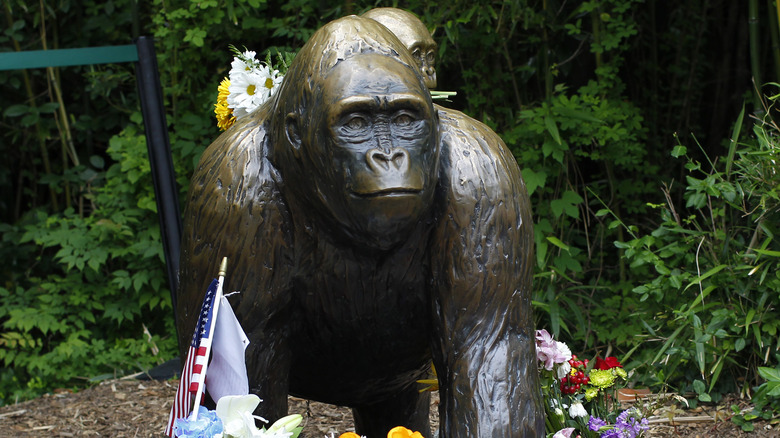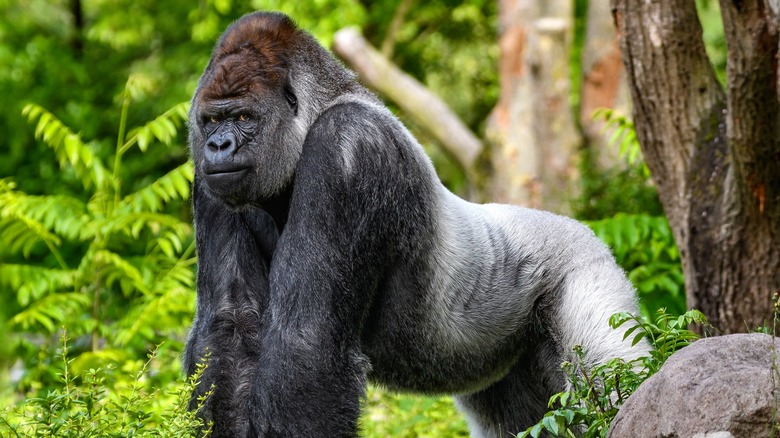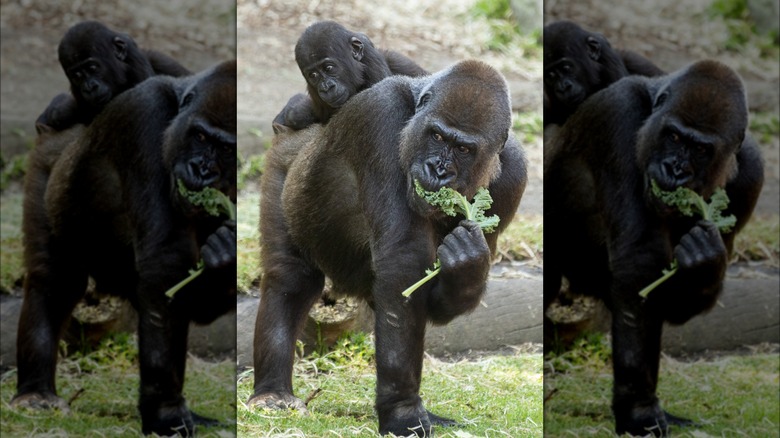What Happened To Harambe's Body After He Was Killed?
In 2016, Harambe the gorilla was shot and killed by an emergency response team when a toddler fell into the animal's Cincinnati Zoo enclosure. In the aftermath, the Cincinnati Zoo's Center for Conservation and Research of Endangered Wildlife announced a somewhat positive outcome from the tragic set of circumstances, The Cincinnati Enquirer reported. As a member of the endangered western lowland gorilla species, Harambe — whose body was being held at the zoo at the time — had viable sperm that would be harvested. He was not buried or cremated.
After Harambe died, Vice reached out to then University of California Santa Cruz professor of physical anthropology and gorilla expert Adrienne Zihlman to find out what might otherwise happen to his remains. When gorillas die under normal circumstances, she said their bodies are often cremated, or their skeletons are given to museums and universities. According to Zihlman — who is unrelated to the Cincinnati Zoo — Harambe's relatively young age for a lowland gorilla might make his body particularly useful to science, especially because he was otherwise healthy when he died. "Male gorillas are just barely adults by the age of 15," she said. "They really don't reach their prime until more like 20. ... It's such a valuable animal. [Harambe] was obviously so beautiful, and in prime condition."
The 'frozen zoo'
According to The Cincinnati Enquirer, Harambe's sperm, preserved in liquid nitrogen, could be used to support the future of lowland gorillas, and his tissues samples might also help research and address genetic issues plaguing threatened gorilla populations. In a press conference, Cincinnati Zoo & Botanical Garden director Thane Maynard said despite Harambe's death, his gene pool had not ended.
Shortly after the Cincinnati Zoo announced Harambe's sperm would be retrieved from his body, Kristen Lukas, then head of the Association of Zoos and Aquariums' Gorilla Species Survival Plan, told Reuters his sperm would not likely be used for breeding in the near-term. "It will be banked and just stored for future use or for research studies," she said, referring to something researchers call a "frozen zoo." Of course, the genetic material might be used if a new disease affects lowland gorillas (seen above). "In a dire situation like that, we would then be able to continue the population," Lukas added.
Lowland gorillas are threatened in the wild
The issues of Harambe's remains and the controversial decision to kill him were made more urgent by the status of the creatures in the wild. As of 2022, Illumina said there were only a few hundred thousand lowland gorillas in nature, and per The Gorilla Foundation, over 600 lowland gorillas like Harambe live in zoos. In the wild, lowland gorillas are challenged by over hunting, habitat loss, and disease, especially Ebola hemorrhagic fever. As populations have dropped, genetic diversity has also declined, creating harmful genetic mutations and other issues.
On the tough choice to shoot kill Harambe to save the young boy, Cincinnati Zoo & Botanical Garden Director Thane Maynard said in a statement (via ABC News), "The zoo security teams quick response saved the child's life. We are all devastated that this tragic accident resulted in the death of a critically-endangered gorilla. This is a huge loss for the zoo family and the gorilla population worldwide."


